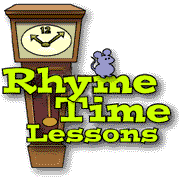Effective literacy strategies for immigrant students
Research has shown that many of these immigrant ESL/FSL children are well-prepared to meet the demands of the Canada's schools and go on to follow successful educational pathways. For example, young immigrants are more likely to attend university than their Canadian-born counterparts,[6] while immigrants for whom English is a second language show especially high rates of university attendance.[7] Visible minority immigrants are less likely to drop out of high school, more likely to take pre-university math courses in high school, and more likely to earn higher grades in math, than Canadian-born students.[8]
Lesson 1
Collaborative reading, systematic phonics instruction, multimedia-assisted reading and diary writing are proven tools for teaching English literacy to ESL immigrant students.
A popular (and effective) form of such collaborative learning is called Cooperative Integrated Reading and Composition (CIRC). Used for comprehensive reading and writing instruction in Grades 2 through Grade 8, CIRC includes story related activities, direct instruction in reading comprehension and other reading activities.
Although several types of CIRC are currently in use, a common method involves forming "learning teams" made up of students (usually four) who are at varying levels of reading proficiency. These students work on different cooperative activities, including creative writing, peer reading, identification of major elements in a story, summarizing of stories and story retelling, and activities geared toward practice of basic reading skills (e.g., spelling, decoding, and vocabulary).
Systematic Phonics and Guided Reading
In systematic phonics instructions, learners are taught how to read and write using the correspondences between letters and the sounds they represent. The goal of phonics instruction is to help beginner readers understand how letters are linked to sounds to form letter-sound correspondences. Guided reading is a strategy to help students develop their reading skills in which the teacher provides support for small groups of readers as they learn to use various reading strategies (e.g., letter and sound relationships, context clues, word structure).
Lesson 3
ESL literacy instruction carried out in classrooms has been shown to be more successful than instruction carried out in laboratories or "pull-out rooms" (separate rooms where students can work individually or in small groups with a resource teacher).
http://www.ccl-cca.ca/CCL/Reports/LessonsInLearning/LinL20090923Effectiveliteracystrategiesimmigrantstudents.html
